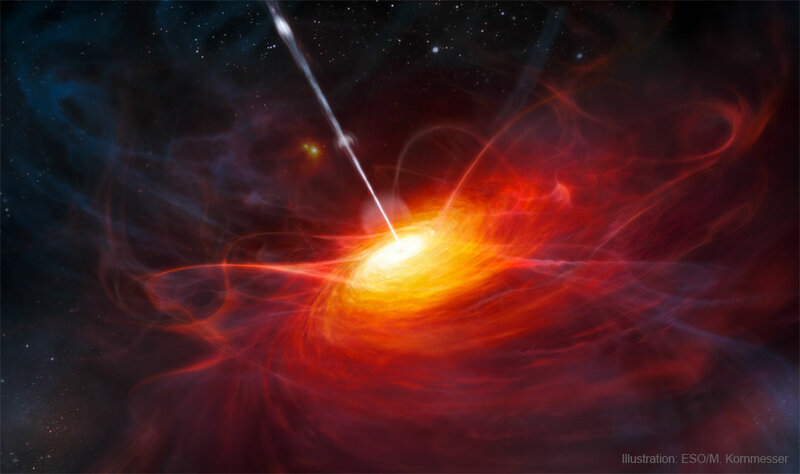Good morning, Rallypoint, and welcome to the February 22nd edition of the Astronomy Picture of the Day (APOD): "Illustration: An Early Quasar." What is a quasar? From Wikipedia: "The term quasar originated as a contraction of "quasi-stellar [star-like] radio source"—because quasars were first identified during the 1950s as sources of radio-wave emission of unknown physical origin. A quasar is an extremely luminous active galactic nucleus (AGN), powered by a supermassive black hole, with mass ranging from millions to tens of billions of solar masses, surrounded by a gaseous accretion disc."
Armed with that bit of trivia, we can return to this artist's view (based on existing data) of what an early quasar might have looked like. How early? That record is currently held by quasar J0313–1806, discovered in 2021. Based on observed redshift data, we are seeing what unfolded a scant 670 million years after the Big Bang.



 NASA
NASA Space
Space Science
Science Photography
Photography Astronomy
Astronomy


